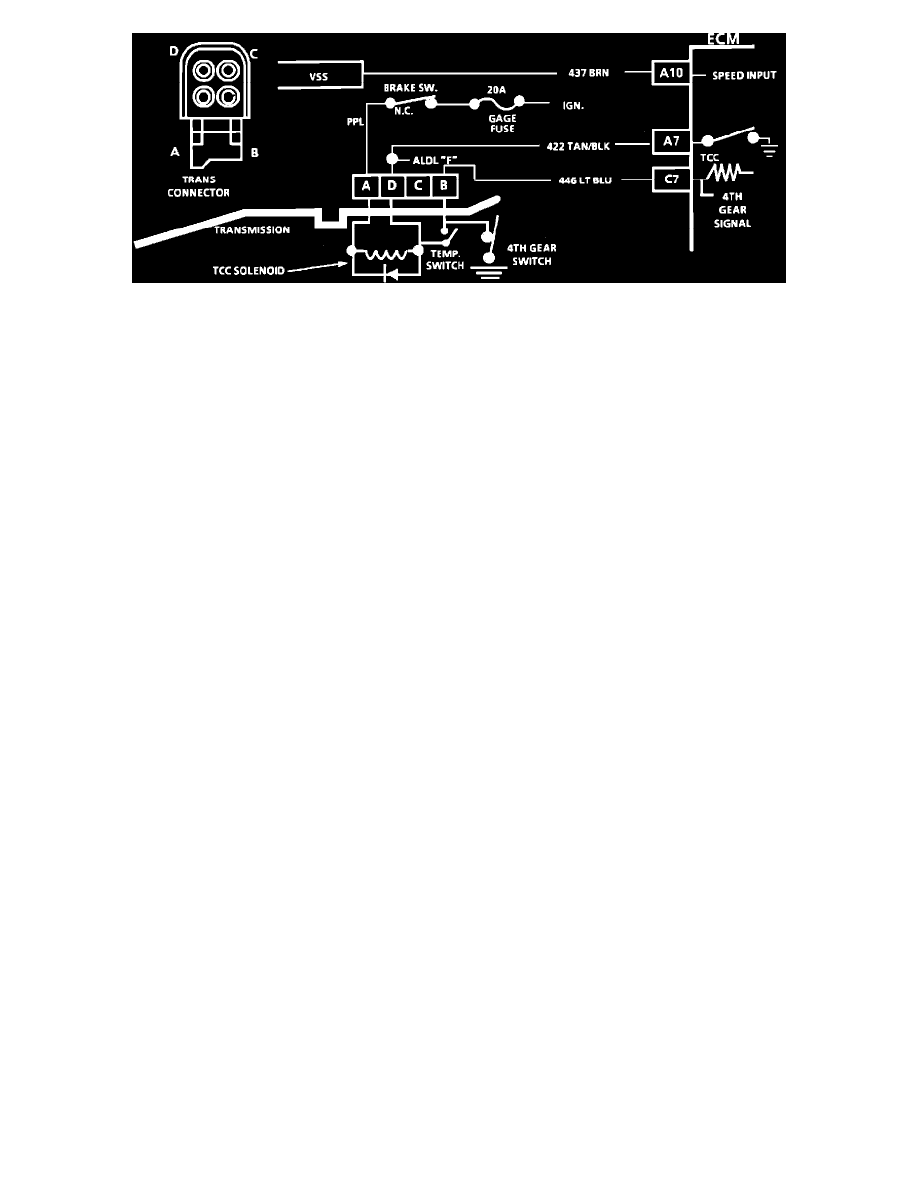R 20 P/U 2WD V8-350 5.7L (1987)

Wiring Diagram For Chart C-8 - Transmission Converter Clutch (TCC) (Under 8500 GVW)
CHART C-8 - TRANSMISSION CONVERTER CLUTCH (UNDER 8500 GVW)
Circuit Description:
The purpose of the automatic transmission torque converter clutch feature is to eliminate the power loss of the torque converter stage when the vehicle is
in a cruise condition. This allows the convenience of the automatic transmission and the fuel economy of a manual transmission. Fused battery ignition is
supplied to the TCC solenoid through the TCC brake switch. The ECM will engage TCC by grounding CKT 422 to energize the solenoid.
TCC will engage when:
-
Vehicle speed above 30 mph (48 km/h).
-
Engine at normal operating temperature (above 65~C) (149~F).
-
Throttle position sensor output not changing, indicating a steady road speed.
-
Brake switch closed.
-
3rd or 4th gears.
Test Description: Numbers below refer to circled numbers on the diagnostic chart.
1.
A test light on indicates battery voltage and continuity through the TCC solenoid is OK.
2.
Checks for vehicle speed sensor signal to ECM using a "Scan" tool.
3.
Checks for 4th gear signal to ECM. This signal will not prevent TCC engagement, but could cause a change in the engage and disengage speed
points.
Diagnostic Aids:
Solenoid coil resistance must measure more than 20 ohms. less resistance will cause early failure of the ECM "Driver". Refer to ECM QDR check. Using
an ohmmeter, check the solenoid coil resistance of all ECM controlled solenoids and relays before installing a replacement ECM. Replace any solenoid
or relay that measures less than 20 ohms resistance.
